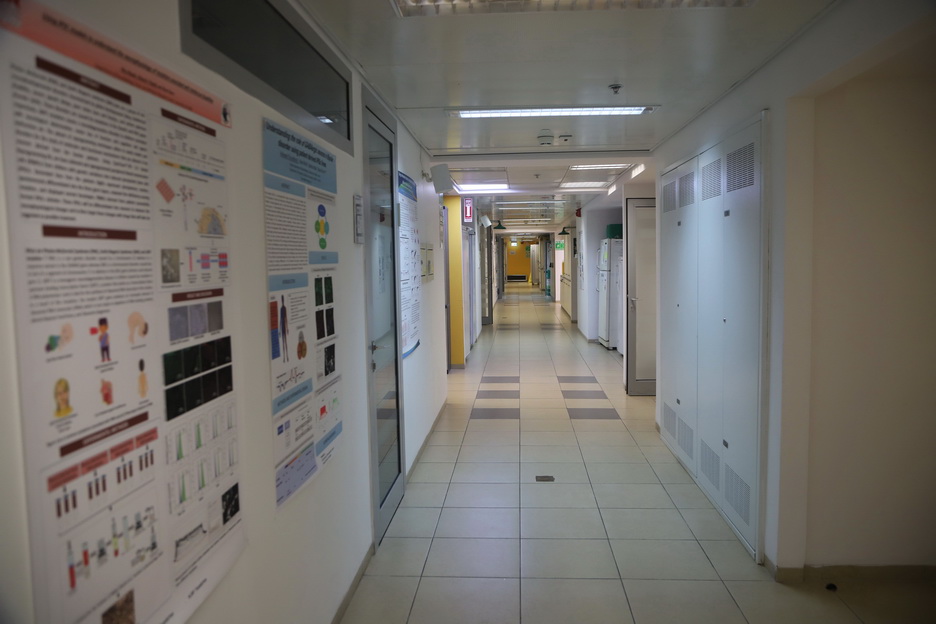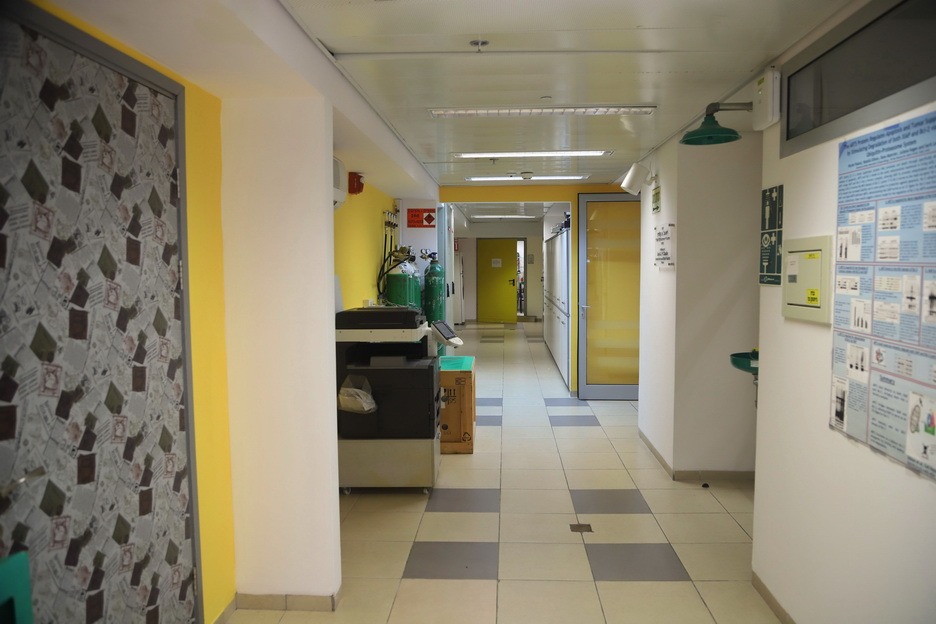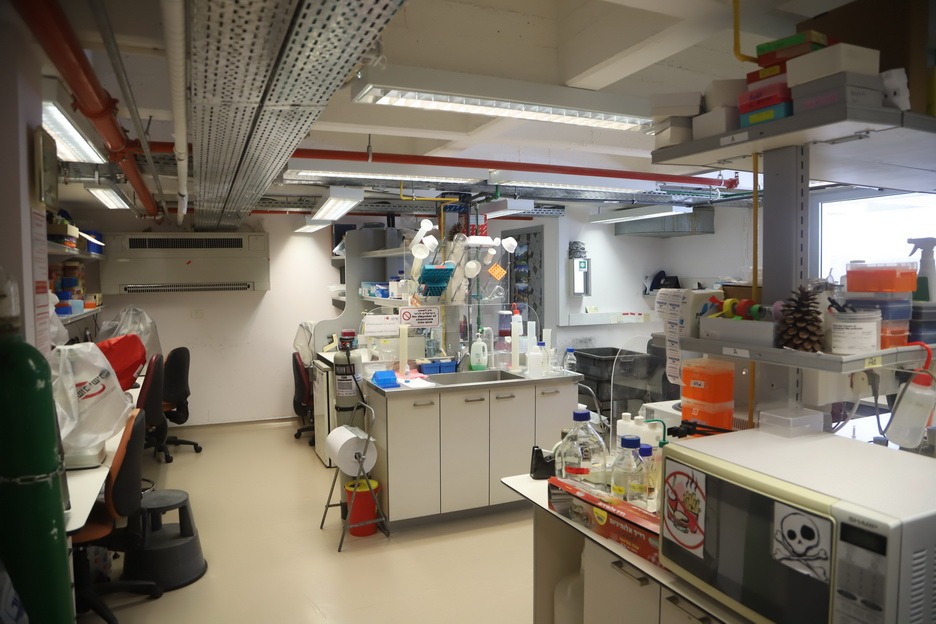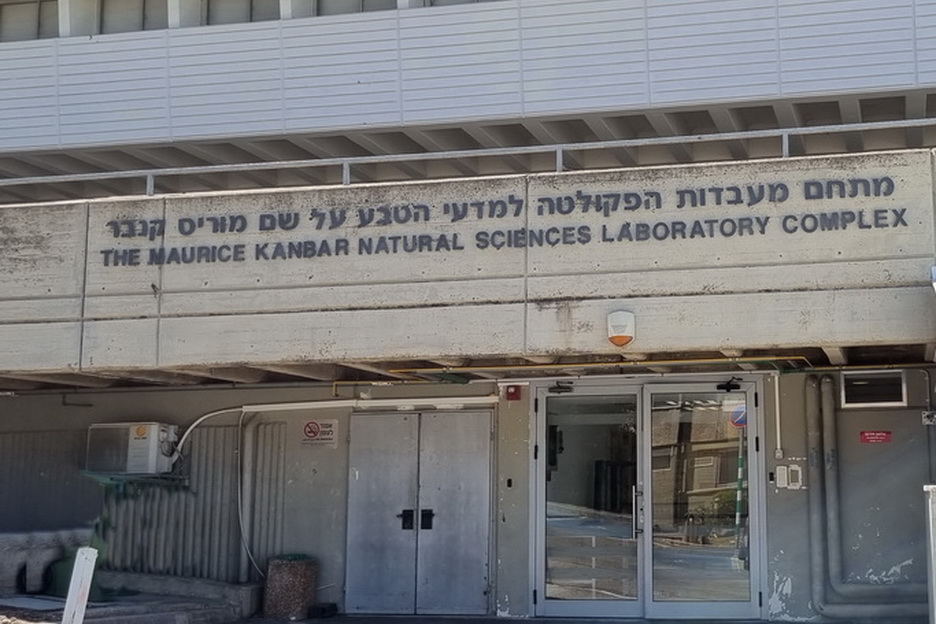The Maurice Kanbar Natural Sciences Laboratory Complex

The Lab of Tumor Dormancy and Metastasis – Dalit Barkan
Breast cancer that appears in distant organs years after initial treatment, also known as metastasis, is the deadliest type of breast cancer recurrence and is associated with a dismal prognosis. Recent evidence indicates that dissemination of tumor cells from the primary breast tumor to secondary sites and organs is an early event in the disease process leading to metastatic recurrence. These disseminated tumor cells may reside in the bone marrow, lymph nodes, and blood circulation of breast cancer patients while remaining dormant (as non-dividing cells). They do not respond to chemotherapy or radiotherapy treatments, which target actively dividing cells, and cannot be detected with current diagnostic imaging, thus lingering in the body as ticking time bombs. Hence, the continuous presence of disseminated dormant tumor cells, even after treatment, may account in part for the latency and subsequent outgrowth of the cells years or decades after initial diagnosis. Unfortunately, to date there are no treatments to target these dormant tumor cells to prevent cancer recurrence, given that the mechanisms underlying tumor dormancy and their switch to deadly metastases are still largely unknown. We have developed the first in vitro and complementary in vivo system to study tumor dormancy and outgrowth. By utilizing these systems our lab investigates potential strategies to prevent and or treat recurrent metastatic disease.
Hila Toledano’s lab focuses on regeneration processes. Highly regenerative tissues such as blood, skin, gut and testis are maintained by rare populations of tissue specific stem cells. Throughout the life of the organism stem cells replace cells spent to normal turnover and repair. Unlike their embryonic counterparts, tissue stem cells are already committed to their lineage and must achieve a perfect balance with differentiated progeny. A major control-unit that regulates this balance is the stem cell microenvironment, known as the niche. In our lab we focus on stem cell – niche communication and on mechanisms that maintain such unique cell compartments. The highly regenerative Drosophila testis and S2 culture cells are the main research systems in our lab.

The lab for neurobiology of psychiatric disorders – Hanoch Kaphzan
The lab for neurobiology of psychiatric disorders is focused on two main subjects that are relevant to translational research in the field of psychiatry. One is the study of neurodevelopmental disorders, and the other is the study of neurostimulation.
Within the study of neurodevelopmental disorders we study the molecular events that govern early brain development, with a focus on an animal model of Angelman syndrome. We study the aberrant metabolism in Angelman syndrome and how it affects the proliferation and the programmed cell death (apoptosis) that are required for normal brain development.
Within the study of neurostimulation we study the cellular and molecular processes underlying neurostimulation. We measure the effects of an electrical field on the functioning of ionic channels kinetics and on neurotransmission.
For these studies the lab utilizes multiple approaches such as biochemistry workup, confocal laser microcopy and multiphoton microscopy of live and fixed tissues, sophisticated intracellular and extracellular electrophysiology, and behavioral studies in rodents.
The lab for Precision Disease Modeling – Shani Stern
The Stern lab studies neurological disorders using patient-derived brain organoids and neuronal cultures. Using functional and molecular assays we are seeking disrupted mechanisms in Parkinson’s disease, bipolar disorder, and autism spectrum disorder. We complement our experimental measurements with computational models that simulate the altered patient cells. We aim to find possible novel therapeutics that will target affected mechanisms.


Estee Kurant’s research focuses on molecular and cellular mechanisms of glia-neuron interactions during embryonic development and in the adult brain. Our model system is fruit fly Drosophila Melanogaster. We study glial contribution to normal brain development and aging. We also study the role of glia in Drosophila models of neurodegenerative diseases such as Parkinson’s and Huntington’s diseases. The lab contains four graduate students (three masters and one doctoral), one postdoc, two undergraduate students and a lab manager.
The lab for Cell Death and Cancer Research Lab – Sarit Larisch
Reverting pre-cancerous breast cells back to normal. A novel approach for prevention of Breast cancer
Treatment of patients diagnosed at an early stage of Breast Cancer (BC) remains a major medical challenge. To date, woman diagnosed at the pre-cancerous stage either undergo surgeries to remove the suspicious tissue, or are monitored every 6 months. Both approaches are not optimal and can result in the development of an aggressive disease. We suggest a novel approach for BC prevention treatment. Every cell in our body has the ability to self-destruct, a process called “apoptosis”. Cancer cells avoid this cell suicide and can thereby become “immortal”. The ARTS protein is necessary for induction of apoptosis. High percentage of breast cancer patients exhibit loss of ARTS. We have shown that the presence of ARTS in breast cells is essential for protecting these cells from transforming into cancer cells. Inactivation of ARTS in normal breast cells causes breast cancer. We have identified small-molecules that can imitate the function of ARTS (ARTS mimetics – AMs). Strikingly, treatment of pre-cancerous breast cells with an ARTS-mimetic reverted them back to their normal state. We are investigating the molecular mechanism responsible for this reversion to provide proof-of-concept for the clinical development of ARTS mimetics as a preventive drug. This is a completely novel approach that has the potential to transform the treatment options for early stage BC patients and prevent cancer.
Ram Reshef Lab
The lab of Dr Ram Reshef deals with the general interdisciplinary field of evolutionary development. This field aim to understand mechanisms of evolutionary change, transitions and trajectories by exploring the varied developmental (embryonic development) programs of organisms in the animal kingdom. Particularly, the lab investigate the evolutionary development of the kidney and for this purpose exploiting four non-conventional model organisms (amphioxus, an invertebrate representing the cephalochordates, Lamprey, representing the cyclostomes which are the early known vertebrates, the catshark that represents the gnathostomes which are the first jawed vertebrates and chick embryos representing the amniotes) positioned in key junctions along the vertebrate evolutionary tree.


